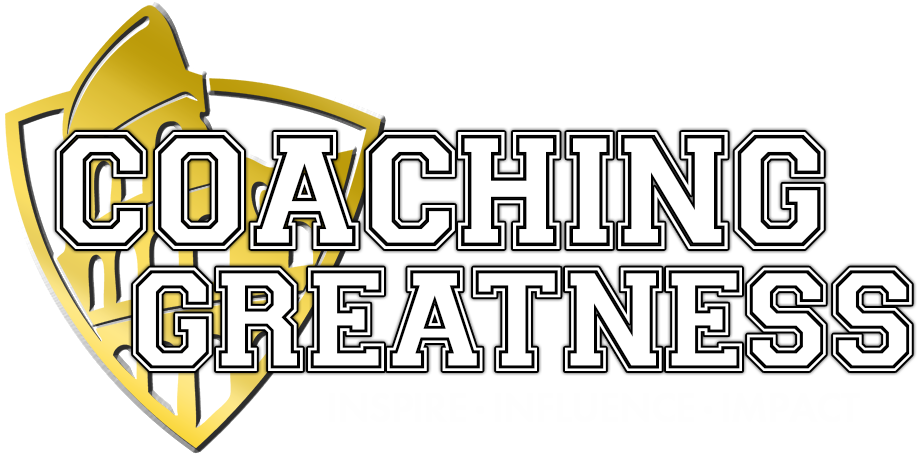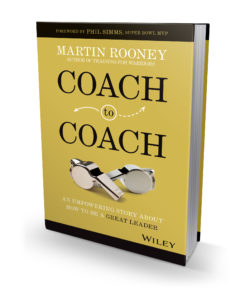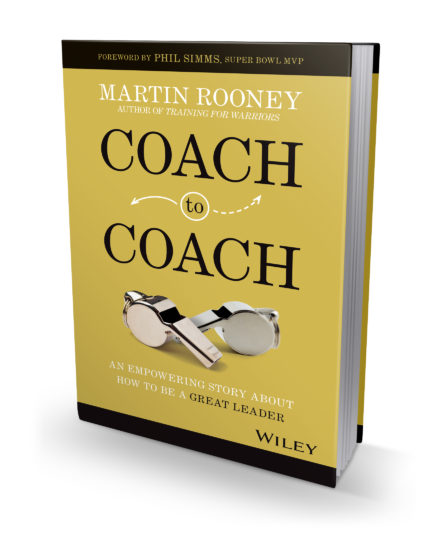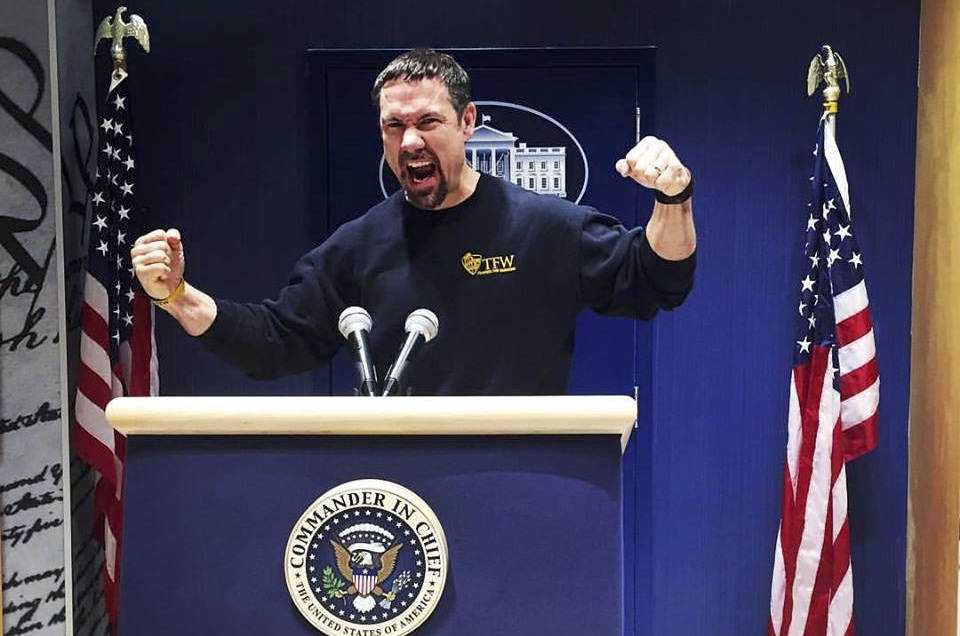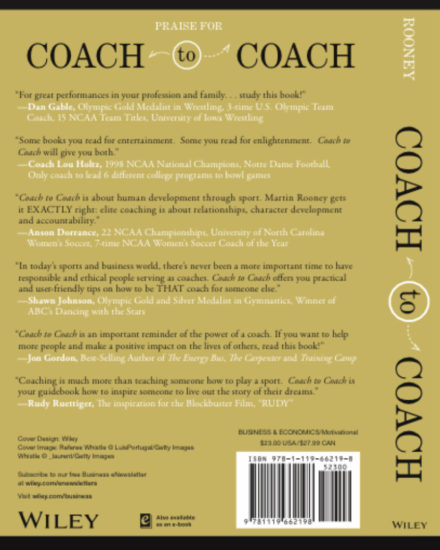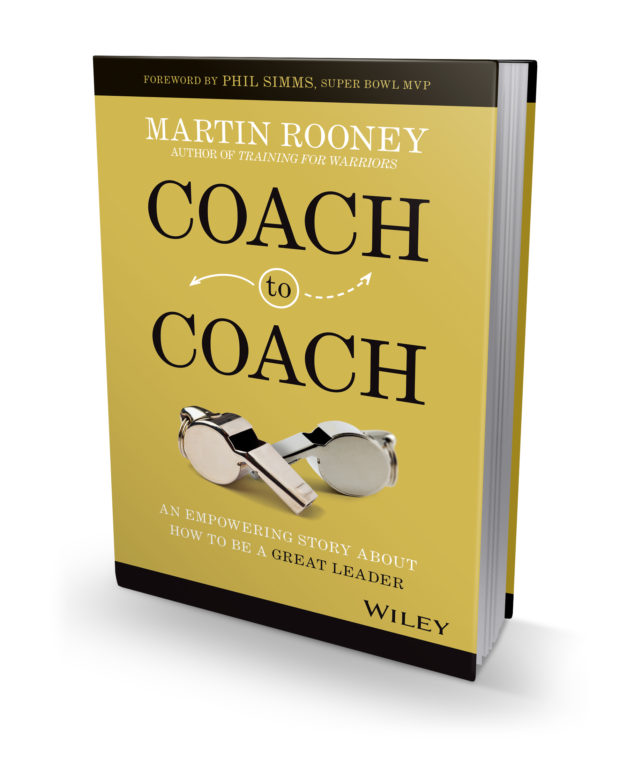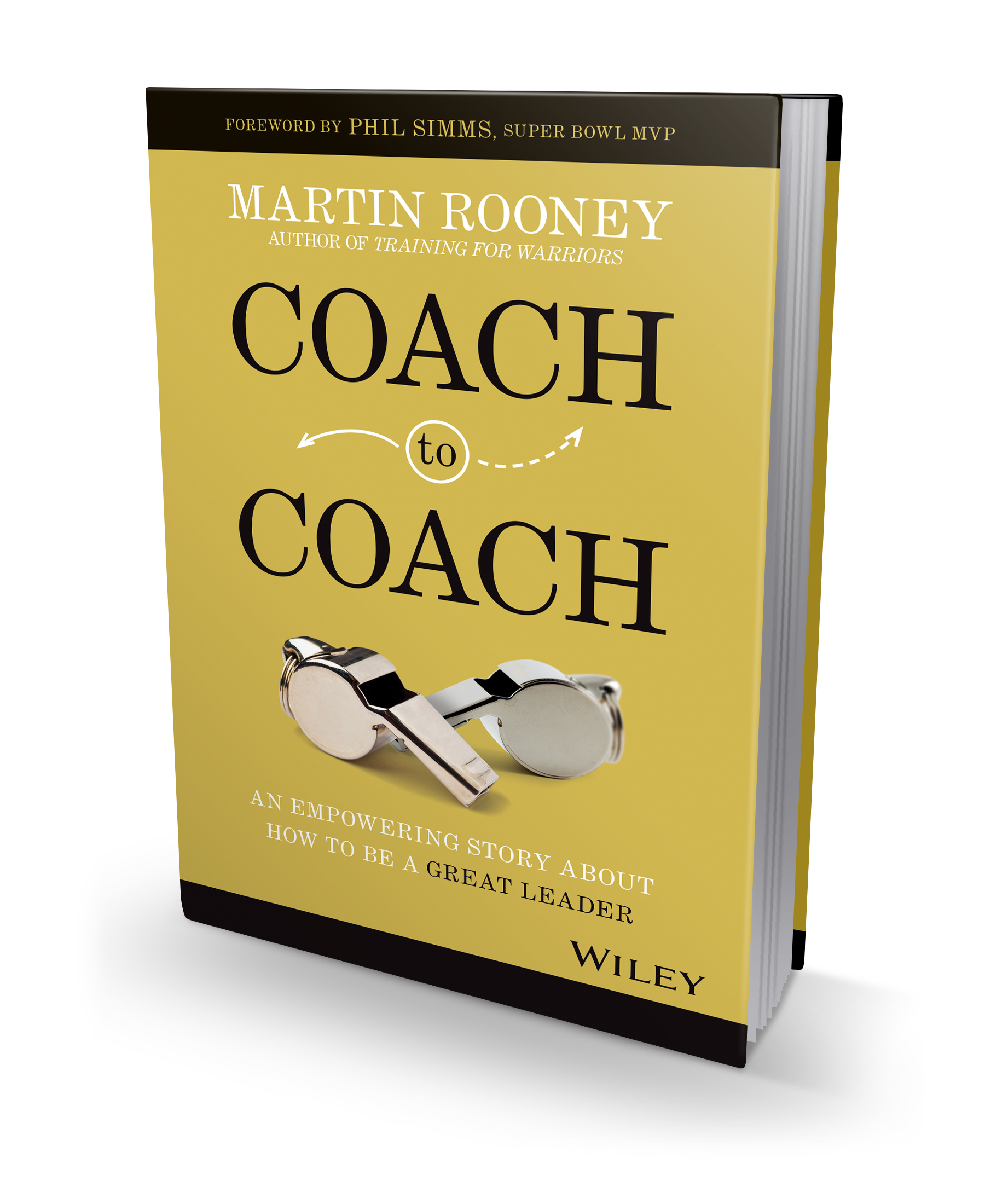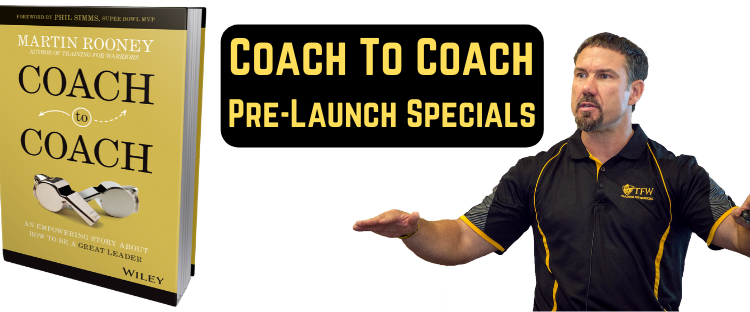
There are some things you may know about me and some you don’t.
I am sure you know I have a new book, Coach to Coach, that is about to hit shelves and stands in March.
I am not sure if you know I am allergic to dogs.
As you can imagine, growing up wasn’t always as fun as a result of this allergy. There were a lot of kid’s houses I couldn’t visit and sleep overs that were missed. There were also a lot of holidays that were cut short because of my wheezing and puffed up eyes that would always come along with an aunt’s, uncle’s or friend-of-the-family’s dog.
Now don’t get me wrong, even though dogs were like my Kryptonite, I really like dogs. I actually wish I could own one too, but that isn’t in the cards for the Rooney Family (3 of my daughters are not allergic, but one is just like her dad).
Over the years, I have learned how to interact with dogs without having an allergic reaction. One way to do this is to simply stay outside. Another is to make sure that if I do pet a dog, I wash my hands immediately afterward or before touching my face. By learning these “hacks” to my allergy, I have been able to enjoy some of the joys of being a dog owner without having to actually own one.
So, now when I get a chance to have some fun with dogs, I don’t miss it.
Recently, I had the opportunity to interact with three different dogs and learned three different lessons. Each one is powerful and can change your life.
3 Dogs, 3 Lessons
Dog #1 Maverick
My friend Howard has a big German Shepherd. He is one of the most energetic and powerful dogs I know. And I also know this: If you have a ball to throw, he will be your best friend. And not because he likes you; but because he is obsessed with catching or fetching that ball. When I throw a lacrosse ball with him, sometimes Howard will fake him out with a false throw. Maverick will not cease looking for the ball even when it isn’t there. Then when Howard does give him the ball again, it is tough to get it back.
The lesson for you?
What is your lacrosse ball?
What I really mean is what are you obsessed with? What is something you will do anything to chase and won’t give up on until you possess it? What is it that you will work so hard for once you have it and would take a German Shepherd to get you to release it? And I am not just talking about passion here.
Even passion will only get you so far. Everyone is a little passionate about something. The most successful people I know are not just passionate about what they do. They are obsessed. It consumes them and as a result they do the things it takes to be great that other people just won’t do.
When I need to blow off some steam, I go to the gym to train. For the last 25 years, if I don’t do something in the gym at least 4-5 times per week, I don’t feel well.
In a way, you could say I am obsessed.
But over the last few months, I have realized I have an obsession that makes my workout schedule seem distracted at best.
My new book Coach to Coach has become my “lacrosse ball.”
I wanted to make a contribution using something I know that could make an ongoing difference. I couldn’t stop chasing the idea until it was written. I wouldn’t let it go until l had a publisher. I latched down on famous people for testimonials and when I do get this book in my hands on March 1, it may take a German Shepherd to pry it from my hands.
Are you obsessed with anything right now?
What is your lacrosse ball?
Dog #2 Ace
My neighbor owns a border collie. This dog, however, isn’t really my buddy like Maverick. When I walk to get my kids at the bus stop, this dog will race to the other side of the street, stop and growl and relentlessly bark at me. And I mean showing his teeth with aggression. I never understood how he developed the discipline to stay on his side of the street instead of crossing to attack. Then I found out that my neighbor had installed an “invisible fence.” This is a boundary that is created and will shock the dog if it tries to cross the invisible fence line. My neighbor said that once the dog understood the boundaries and the potential pain that might come with crossing it, the dog never attempts to cross the street. Even when the fence is off!
Another great lesson!
What about you?
What is your electric fence?
Do you have any invisible fences you are still minding that don’t exist anymore? Is there an old
belief or limitation that is still holding you back? The successful people I have met are always pushing their limits. They are always extending their boundaries. Even if it is occasionally painful at first.
I wanted to write Coach to Coach for a long time, but there were invisible fences holding me back. I imagined I wasn’t a writer. I didn’t think I could write an inspirational story that a publisher would be interested it. I was stuck barking about this book I was going to write, but for a long time this bark had no bite.
I pushed my limits and it was a little bit painful. When I wrote Coach to Coach, I pushed a new boundary by writing a coaching story instead of a textbook like I was used to. The process of editing and marketing created more pain, but I kept moving forward in spite of it. Even though there were times I started to not believe I could do it, I shut those invisible fences off and kept going.
Is there anything holding you back and what can you do to turn it off?
What is your electric fence?
Dog #3 JoJo
My dad has a half pug/half Jack Russell named JoJo. Not long after I moved out of my parent’s house, they got him (my parents had to get rid of their pugs when I was born due to my allergies and I don’t think they ever really forgave me). JoJo is the most loyal dog I have ever seen. Not only does he actually keep my dad on schedule, but the minute my dad leaves the house without him, JoJo will howl like a wolf until he returns. But the howling of loyalty is not the best lesson I got from JoJo. It is about how he reacts to when he sees my dad or when he sees me or my kids. He actually SMILES! And when he does, his tail is always wagging too. And because he gets excited about you, you get excited about him and he gets his belly scratched just like he planned.
Another great lesson.
What and who are you most enthusiastic about?
When you get excited about someone else, they have no choice but to be a little excited about you too. So how about you? Are you always smiling when you see the people you care about? Are you always wagging your tail and showing the world what you are excited about?
JoJo Rooney Rule: Life favors the enthusiastic.
My new book Coach to Coach has a few chapters dedicated to one of the most important skills you can learn: enthusiasm. To be a success, you have to be enthusiastic about others and the things you are spending your time on.
As you can probably tell by all my emails, my tail is always wagging when I am thinking about this new book. And that is because I am so enthusiastic and excited to have you read and grow from it.
I hope this email inspires you to better understand yourself, but that it also gets you to take a chance on the book and get excited about it too.
You can order it here and learn about all the Free Bonuses and Specials I have until March 1st. I promise it might give you the inspiration to pass through your invisible fence and chase that lacrosse ball you have been thinking about.
Yours in Strength
Martin
